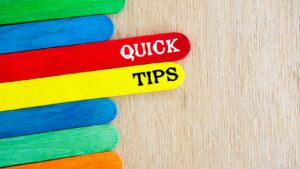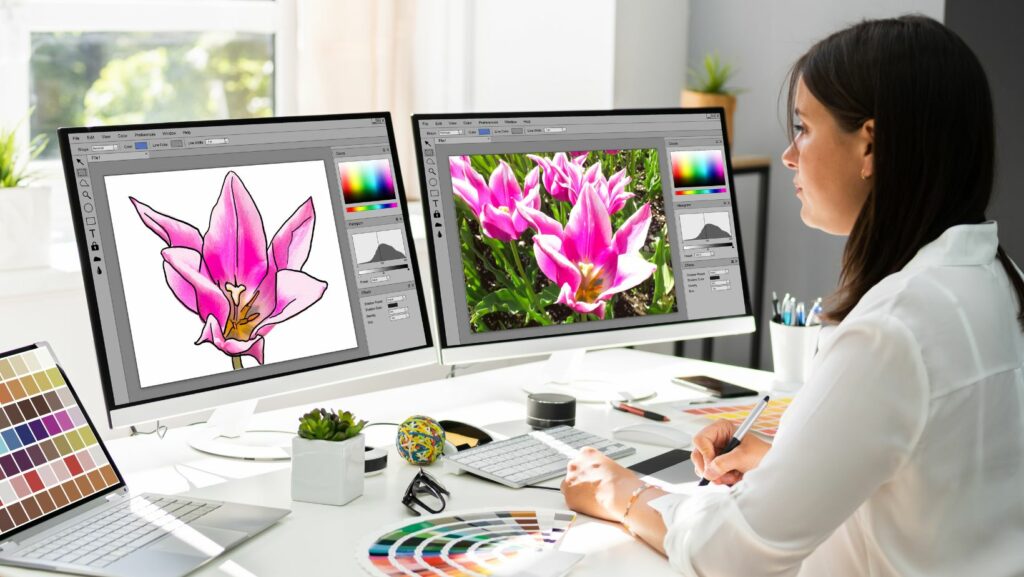Stepping into the world of freelance artistry can feel like venturing into an exciting yet intimidating wilderness. It’s a realm where creativity and business collide, where one’s passion becomes a source of income. This article aims to guide emerging freelance artists, shedding light on the path to success in this dynamic field.
Freelance Artist Tips
Individuals striding into the freelance artist realm benefit from following certain pieces of advice.
 Prioritize Self-Development: Artists must constantly improve their skills and understand emerging trends. Online courses, tutorials, and workshops, for example, can help artists refine their skill set.
Prioritize Self-Development: Artists must constantly improve their skills and understand emerging trends. Online courses, tutorials, and workshops, for example, can help artists refine their skill set.
Invest in Quality Tools: High-quality material and tools are essential for artists. They don’t just impact the work’s quality but also influence productivity.
Build a Solid Portfolio: This is the artists’ visual CV. It showcases skills, versatility, and style to potential clients, and platforms like Behance and Dribbble can host your portfolio.
Embrace Online Marketing: Effective use of social media platforms can help artists reach a wider audience. Instagram and Pinterest, for instance, are platforms where artists can share their work and gain visibility.
Set Fair Pricing: Artists deserve to be fairly compensated for their work. Pricing takes into account time, effort, and skills, and platforms like Artfinder or Saatchi Art can help benchmark pricing.
Understand Legalities: Artists would do well to familiarize themselves with copyright laws and contracts. Legal guidance, though it may be costly, will protect against potential issues.
Understanding the Freelance Art Industry
 The freelance art industry presents a unique blend of creativity and commerce. It’s an arena that encourages innovation while rewarding business insights. It maximizes an artist’s potential through platforms like Behance, where showcasing their work comes with the lure of international exposure. It provides resources like Artfinder for discovering a fair market value for the artist’s work. The scrutiny of copyright laws also underlines the business aspects involved. In essence, understanding the freelance art industry not only involves honing creativity but also mastering the nuances of running a sustainable venture. It’s the process where an artist turns into a successful freelancer. Striking the right balance becomes essential, as the artist has to evolve into a business persona while maintaining their creative pulse. In the complex world of freelance art, ensuring financial stability without compromising creativity is a much-needed art in itself.
The freelance art industry presents a unique blend of creativity and commerce. It’s an arena that encourages innovation while rewarding business insights. It maximizes an artist’s potential through platforms like Behance, where showcasing their work comes with the lure of international exposure. It provides resources like Artfinder for discovering a fair market value for the artist’s work. The scrutiny of copyright laws also underlines the business aspects involved. In essence, understanding the freelance art industry not only involves honing creativity but also mastering the nuances of running a sustainable venture. It’s the process where an artist turns into a successful freelancer. Striking the right balance becomes essential, as the artist has to evolve into a business persona while maintaining their creative pulse. In the complex world of freelance art, ensuring financial stability without compromising creativity is a much-needed art in itself.
How to Market Yourself as a Freelance Artist
 Emphasizing business acumen, artists master strategies to market themselves effectively. Personal brand development involves creating an artist’s statement, unique and recognizable style, and a persuasive narrative. Consistency distinguishes a brand, embodying all promotional materials, website, and visual arts pieces. Harnessing the power of social media, profiles on platforms such as Instagram, Pinterest and LinkedIn amplify reach, fostering relationships with potential patrons, artists, and art communities. Opportunities lie in direct participation, engaging with people’s posts or connecting through messages. Online galleries like Behance or Etsy become an artist’s storefront. Customer testimonials, bios, portfolio images, all contribute to digital marketing strategies.
Emphasizing business acumen, artists master strategies to market themselves effectively. Personal brand development involves creating an artist’s statement, unique and recognizable style, and a persuasive narrative. Consistency distinguishes a brand, embodying all promotional materials, website, and visual arts pieces. Harnessing the power of social media, profiles on platforms such as Instagram, Pinterest and LinkedIn amplify reach, fostering relationships with potential patrons, artists, and art communities. Opportunities lie in direct participation, engaging with people’s posts or connecting through messages. Online galleries like Behance or Etsy become an artist’s storefront. Customer testimonials, bios, portfolio images, all contribute to digital marketing strategies.
Email newsletters, resourceful for maintaining touchpoints with prospects while adding a personal touch. Expert artists leverage Search Engine Optimization (SEO) techniques, incorporating relevant keywords in their website content and blog posts, enhancing visibility in online searches. Offering art classes, contributing guest blogs or podcasts, they make themselves a go-to resource.
Overcoming Challenges Faced by Freelance Artists
It’s clear that freelance artists must navigate a unique intersection of creativity and business. They’ve got to grasp market trends, network effectively, and manage their business wisely. As a beginner, it’s crucial to focus on self-growth, invest in top-notch tools, and build a robust portfolio on platforms like Behance.
Ultimately, the successful transformation from artist to freelancer hinges on striking the right balance between business acumen and creative expression. This ensures financial stability without compromising artistic integrity. The journey may be challenging, but with these tips, freelance artists can turn those challenges into stepping stones towards success.



